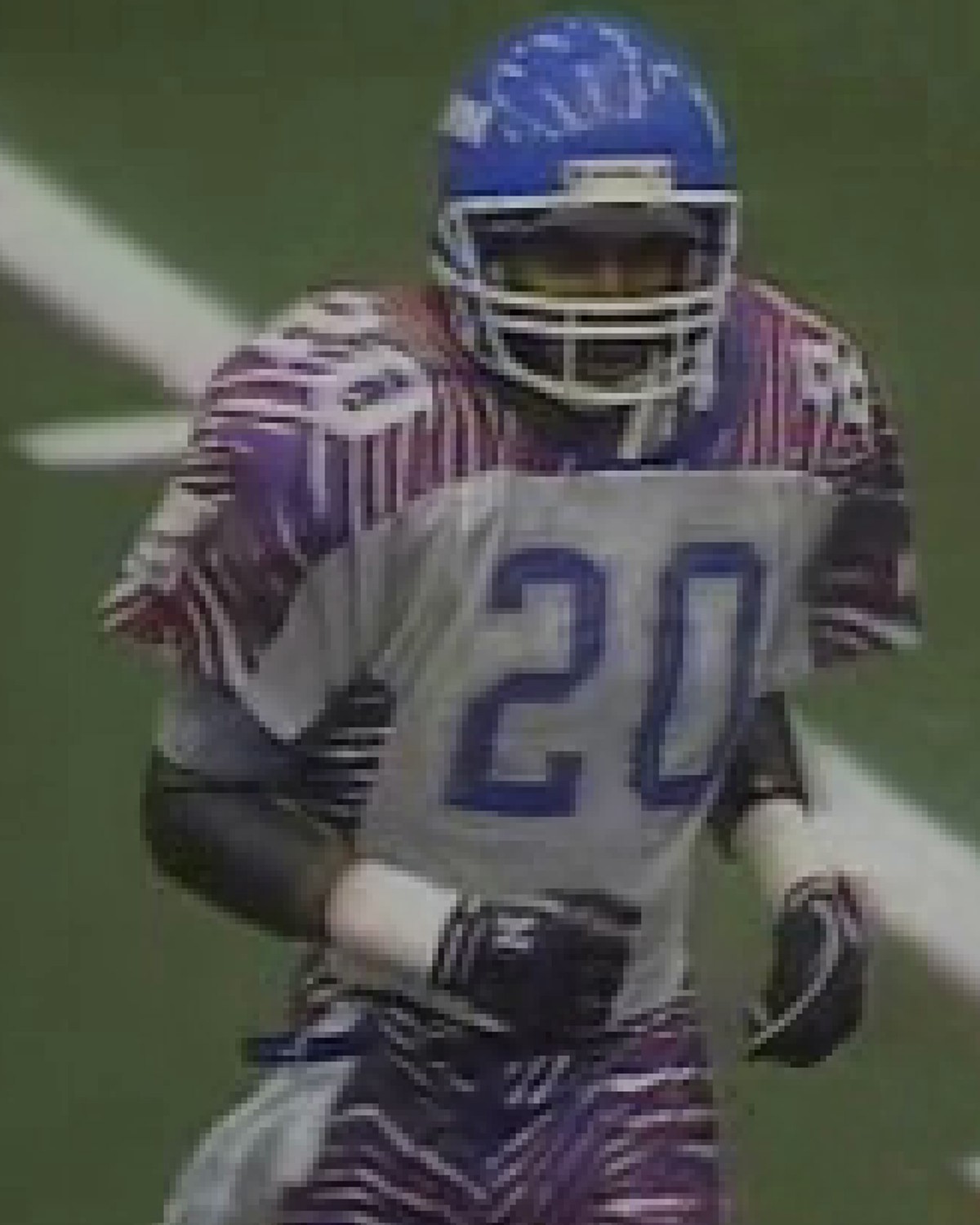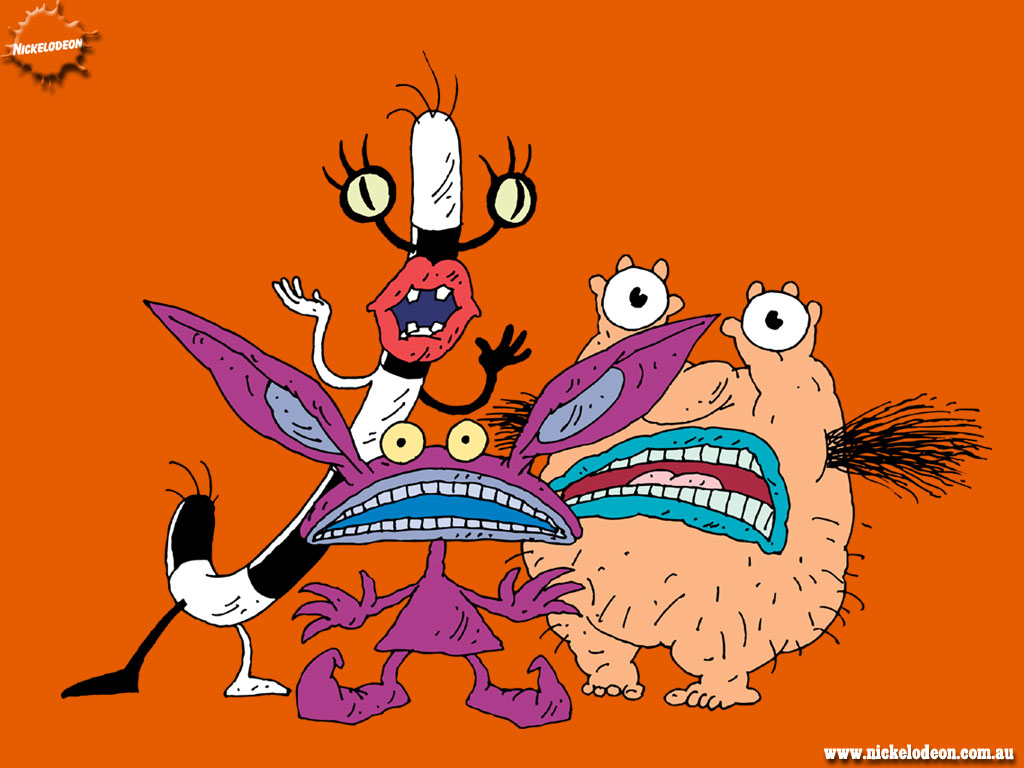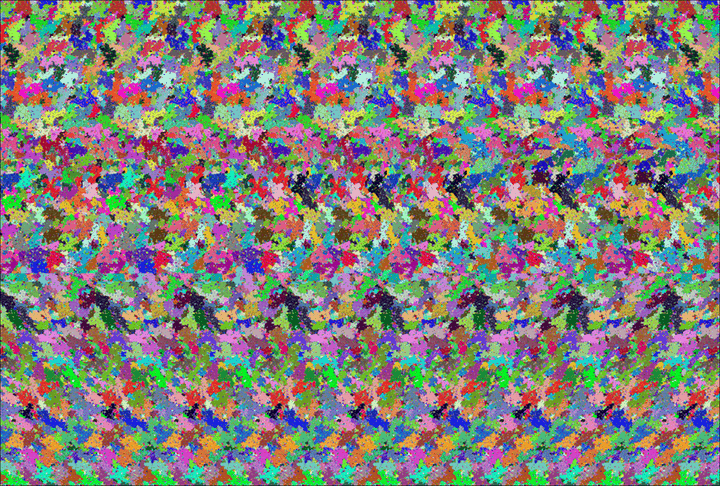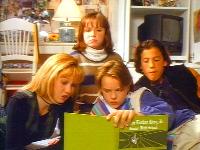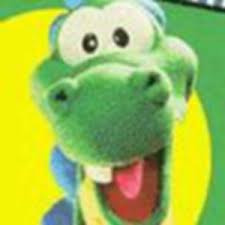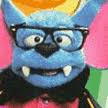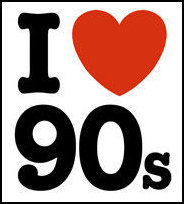
Does the name "Zeke the Plumber" send chills of terror down your spine? Do you still wonder what happened to the buried treasure of ex-counselor Sarah Madre? Do you continue to lose sleep wondering about the appearance and whereabouts of mysterious camp owner, Dr. Kahn? Does the seemingly innocuous phrase "awful waffle" make you wince in pain?
Well, you may be a Salute Your Shorts junkie.
Don't worry, though, you're not alone. Many of us children of the 90s suffer a similar affliction. There was a wonderfully effective cure available briefly in the 90s that aired Saturdays at 5:30 p.m. Unfortunately, the treatment is no longer available and those of us still suffering withdrawal are forced to self-medicate with YouTube clips. You can put yourself on the waiting list for long-term treatment, but the outlook isn't good.
In a way, we all grew up at Camp Anwanna. We had all of our favorite standard 90s characters: The hero, the princess, the bully, the new-age oddball, the jock, the nerd, and the butt-of-the-jokes chubby one. They were all under the semi-tyrannical rule of Kevin "Ug" Lee, (get it? Ug...Lee? Ugly? Witty, yes?) their authoritarian counselor charged with keeping this wacky mismatched group of campers in line.
I went to various summer camps for 14 years, and I don't know a single one of my old camp songs by heart. I do, however, have the uncanny ability to remember all of the lyrics and produce mental screenshots of the Camp Anawanna song:
"We run, we jump, we swim and plaaaay. We row and go on trips
But the things that last foreveeeeeer are our dear friendships.Camp Anawanna, we hold you in our hearts
And when we think about you--it makes me wanna fart!
--"It's 'I hope we never part'
Now get it right or pay the price!"Now we will share a lifetime of the fondest memories
By the lake of Anawanna...set in the old pine trees!Camp Anawanna, we hold you in our hearts
And when we think about you --this thing came apart!
Think Anawannawanna, Speak Anawannawanna, Live Anawannawanna. Ug!"
Here is a clip of the season 2 version of the theme song, which differs from the original in one initially undetectable but extremely significant way:
Seems normal enough, right? You're probably thinking to yourself, why that's exactly how I remember it! Let's do a character run-down and I think you'll see the slight discrepancy to which I was referring:
 Bobby Budnick, our charming resident bully. You may say, how can a guy with a flaming red mullet be a bully? In most other settings, wouldn't he be relentlessly mocked for merely existing with such an unfortunate aesthetic? Yes, but this was summer camp. This was also the nineties, where a mullet and cut-off t-shirts is more than enough to declare your bad-ass status. Budnick was forever playing tricks on his unsuspecting and less antisocial peers, most notably when he told the nightmare-inducing Zeke the Plumber ghost story to the other campers and set up scare traps across Anawanna. Well, he got what was coming to him when they saw him screaming like a girl when he ran into those spider webs. Eh? Am I right? Also, Budnick seemed to have a virtual fountain of contraband available for sale to his fellow campers. He was a big fan of the empty threat "...or I'll pound you," in which his mullet and cut-off t-shirt bad-assedness it emphasized by forever unrealized bluff of pounding (which I am going to hope for all of our sakes is a euphemism for beating someone up.)
Bobby Budnick, our charming resident bully. You may say, how can a guy with a flaming red mullet be a bully? In most other settings, wouldn't he be relentlessly mocked for merely existing with such an unfortunate aesthetic? Yes, but this was summer camp. This was also the nineties, where a mullet and cut-off t-shirts is more than enough to declare your bad-ass status. Budnick was forever playing tricks on his unsuspecting and less antisocial peers, most notably when he told the nightmare-inducing Zeke the Plumber ghost story to the other campers and set up scare traps across Anawanna. Well, he got what was coming to him when they saw him screaming like a girl when he ran into those spider webs. Eh? Am I right? Also, Budnick seemed to have a virtual fountain of contraband available for sale to his fellow campers. He was a big fan of the empty threat "...or I'll pound you," in which his mullet and cut-off t-shirt bad-assedness it emphasized by forever unrealized bluff of pounding (which I am going to hope for all of our sakes is a euphemism for beating someone up.) Donkeylips, the unfortunately monikered hapless fat kid. He was generally relegated to the role of thankless lackey and sidekick to the aforementioned Mr. Budnick. Donkeylips represented those feelings of insecurity and inadequacy in all of us; his premature cynical outlook and unquenchable desire to be liked was certainly recognizable. Oh, and did I mention he was fat? Boy, was he fat! Despite all of those deep character traits, his deplorable chubbiness was more often than not the major Donkeylips punchline.
Donkeylips, the unfortunately monikered hapless fat kid. He was generally relegated to the role of thankless lackey and sidekick to the aforementioned Mr. Budnick. Donkeylips represented those feelings of insecurity and inadequacy in all of us; his premature cynical outlook and unquenchable desire to be liked was certainly recognizable. Oh, and did I mention he was fat? Boy, was he fat! Despite all of those deep character traits, his deplorable chubbiness was more often than not the major Donkeylips punchline. Sponge, the smart nerdy one. Like any good 90s show, his intelligence and social ineptitude is characterized by his character's need for glasses. Apparently, popularity was reserved for those of us with superior eyesight. This nebbish little bowl-cutted pipsqueak sometimes veered dangerously close to the Screech zone, but was generally more brainy than irritating. You can also see in the intro that he enjoys science based on his penchant for dressing skeleton models in his own clothing and examining them with a magnifying glass (obviously the correlation between vision-enhancers and nerdiness is deeper-set than we'd originally thought.) They call him Sponge because he absorbs things. Get it? Like a Sponge! Oh, Salute Your Shorts. What zany nicknames will you think of next?
Sponge, the smart nerdy one. Like any good 90s show, his intelligence and social ineptitude is characterized by his character's need for glasses. Apparently, popularity was reserved for those of us with superior eyesight. This nebbish little bowl-cutted pipsqueak sometimes veered dangerously close to the Screech zone, but was generally more brainy than irritating. You can also see in the intro that he enjoys science based on his penchant for dressing skeleton models in his own clothing and examining them with a magnifying glass (obviously the correlation between vision-enhancers and nerdiness is deeper-set than we'd originally thought.) They call him Sponge because he absorbs things. Get it? Like a Sponge! Oh, Salute Your Shorts. What zany nicknames will you think of next? Telly, the girl jock. Yes, a girl jock. How progressive is that? Telly was relatively bright and normal, by Camp Anawanna standards. She was largely unexceptional when cast against her madcap caricatures of camper peers. If anything, the most unusual thing about our friend Telly (aside from her sharing a name with a certain contemporary Sesame Street monster) shows up in the opening credits. Telly's real name is Venus DeMilo. I kid you not. Her parents actually named her that. Whenever I pop out a child I too usually think to myself, geez, this thing really looks like an ancient Greek sculpture. I can only assume she was born with broken-off arms, or else there's really no explanation.
Telly, the girl jock. Yes, a girl jock. How progressive is that? Telly was relatively bright and normal, by Camp Anawanna standards. She was largely unexceptional when cast against her madcap caricatures of camper peers. If anything, the most unusual thing about our friend Telly (aside from her sharing a name with a certain contemporary Sesame Street monster) shows up in the opening credits. Telly's real name is Venus DeMilo. I kid you not. Her parents actually named her that. Whenever I pop out a child I too usually think to myself, geez, this thing really looks like an ancient Greek sculpture. I can only assume she was born with broken-off arms, or else there's really no explanation.
(the other Venus DeMilo)
 Dina, our little Princess. What camp would be complete without one? Her range of hysteria generally ranged from the inability to select the appropriate outfits to the crushing disappointment of chipping a nail. Who says they don't write good parts for women on TV? My favorite-ever Dina storyline was when she went out with Budnick and required him to dress like a preppy square to meet her country-club standards. Oh, Dina! When will you learn? She did, however, accidentally ask Donkeylips to a dance once but ended up enjoying herself, so I'll let her accrue a few niceness points for that one.
Dina, our little Princess. What camp would be complete without one? Her range of hysteria generally ranged from the inability to select the appropriate outfits to the crushing disappointment of chipping a nail. Who says they don't write good parts for women on TV? My favorite-ever Dina storyline was when she went out with Budnick and required him to dress like a preppy square to meet her country-club standards. Oh, Dina! When will you learn? She did, however, accidentally ask Donkeylips to a dance once but ended up enjoying herself, so I'll let her accrue a few niceness points for that one. ZZ, the requisite eccentric Kumbaya-er. I suppose you could blame her blondeness for her flightiness, but her ocean of oddness ran a bit deeper than ditziness. ZZ was into the environment, and frequently conversed with inanimate objects to illustrate her love and compassion for them. That sounds normal, right? She sometimes went a little off the deep end, and I'm not just talking about during Instructional Swim. A very loud audio version of ZZ playing one of her save-the-world songs on guitar can be found here, but I caution you that her anger brings forth a lot of unwarranted microphone feedback.
ZZ, the requisite eccentric Kumbaya-er. I suppose you could blame her blondeness for her flightiness, but her ocean of oddness ran a bit deeper than ditziness. ZZ was into the environment, and frequently conversed with inanimate objects to illustrate her love and compassion for them. That sounds normal, right? She sometimes went a little off the deep end, and I'm not just talking about during Instructional Swim. A very loud audio version of ZZ playing one of her save-the-world songs on guitar can be found here, but I caution you that her anger brings forth a lot of unwarranted microphone feedback.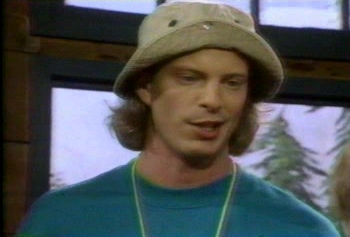
Ug, O great god of precautionary zinc oxide nose application. We all sometimes worry that we're going to get an awful sunburn not so much here or here, but right here. He was your basic authority figure standing in the way of general fun and mayhem, but occasionally he let them get away with a fun thing or two. Also, in the intro we learn that he plays a mean piano.
So, that brings us to Michael. What's that you say? Michael's not in the intro? How odd. Why ever could that be?

Surprisingly blond for someone named Michael Stein, Michael was the show's obligatory everyman. His main identifiable quality is that he's an all around nice, normal guy in a sea of insanity. It is for Michael's unfortunate experience that the show was named, as the first episode featured a sequence in which Budnick and Donkeylips stole his boxer shorts, ran them up the flagpole, and spiritedly saluted them.
They change that sequence in the second (and last) season intro. Why, you may ask. What could they possibly be trying to cover up?
Oh, right. That Michael has been swiftly and quietly replaced by this guy:

Michael mysteriously comes down with the chicken pox, and as is wont to happen in these types of situations, his parents decide to take him hiking in Switzerland for the remainder of the summer. Don't fight it, it makes perfect sense. Obviously the camp's waiting list is spectacularly full, as Ronnie Pinsky (above) replaces Michael just a few hours after his departure. Ronnie goes on to fill the Michael void, essentially assuming all of the major Michael plotlines and serving as a sort-of stand-in Michael for the remainder of the series.
It should also be noted that the actor who played Ronnie Pinsky, Blake Sennett (though credited as Blake Soper in the series) is now the lead guitarist for indie rock band Rilo Kiley. Wait, what? Really? For those of you unfamiliar with the indie music scene, you may recognize their song "Portions for Foxes" from the Grey's Anatomy pilot (which, let's be honest, anyone unfamiliar with the indie scene is pretty likely to watch Grey's Anatomy).

So there you have it. Despite the Michael/Ronnie switcharoo, the show maintained its quality and wit throughout its two season run. Thank you, Salute Your Shorts, for bringing us hours of childhood diversion and entertainment with your wacky storylines and gloriously likable one-dimensional characters.
For that, we salute you.
Check it out:
Join the cause: petition to get Salute Your Shorts out on DVD
Watch the full first episode online









